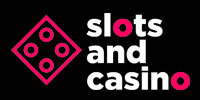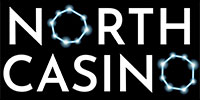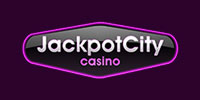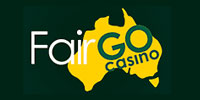Best Blackjack Books
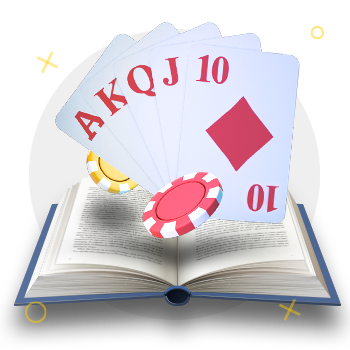
Blackjack books are one of the best ways to dive deeper into the casino’s most popular card game. You can learn new strategies, discover advanced tactics, and get a first-hand experience from the pros.
There are plenty of titles to choose from, many by expert players and renowned casino authors.
Here is our list of the twenty-one best blackjack books on the market. We included a summary of each one and a bit about the author to help you decide what to read first on your journey to play like a pro.
Twenty-One of the Best Books on Blackjack
Blackjack Strategy Books
Blackjack Hall of Fame Books
Books on Counting Cards
Best Casinos to Play Blackjack for Real Money
- 1DuckyLuck Casino
- Over 400 Slots
- Desktop and Mobile-Friendly
- Huge Welcome Bonuses
Deposit Options include:- bitcoin
- mastercard
- visa
- amex
- discover
Compatible with:- windows
- apple
- android
- mobile
500% up to $7,500 - 2Bovada Casino
- Great Crypto Welcome
- MatchPay & Vouchers Banking
- High-Paying Jackpots
Deposit Options include:- visa
- mastercard
- bitcoin
Compatible with:- windows
- apple
- android
- mobile
125% up to $3,750 - 2SlotsandCasino
- Over 500 Slot Games
- Exclusive OUSC Bonus
- Great Specialty Games
Deposit Options include:- visa
- mastercard
- amex
- discover
- bitcoin
Compatible with:- windows
- apple
- android
- mobile
500% up to $7,500 - 3North Casino
- Thousands of Slot Games
- Mobile, Instant & Live Dealer Games
- Excellent Signup & Reload Bonuses
Deposit Options include:- visa
- mastercard
- neteller
- bitcoin
- skrill
- wire
- visa-gift
Compatible with:- windows
- apple
- android
- mobile
Up to $5,000 - 3Hellspin
- Canada Players Accepted, Quick Payouts
- Huge Bonus With Free Spins
- Large Selection of Real Money Games
Deposit Options include:- visa
- mastercard
- bitcoin
- money-orders
- wire
Compatible with:- windows
- apple
- android
- mobile
100% up to $300 + 100 FS - 3Betway Casino
- Uses the Microgaming Software
- Fast Cashouts in Just 1-7 Days
- Online, Mobile, Instant & Live Play
Deposit Options include:- visa
- mastercard
- paypal
- neteller
Compatible with:- windows
- apple
- android
- mobile
100% up to $1,000100% up to €1,000100% up to £1,000 - 3Jackpot City Casino
- Big Jackpots and Massive Deposit Bonuses
- Over 400 Online Casino Games
- Play Live Dealer Games
Deposit Options include:- visa
- mastercard
- paypal
- bitcoin
Compatible with:- windows
- apple
- android
- mobile
100% up to $1,600100% up to €1,600100% up to £1,600 - 3Joe Fortune
- Large Australian Bitcoin-Friendly Casino
- Mobile, Flash, and Download Play Options
- Fastest Payouts
Deposit Options include:- visa
- mastercard
- paypal
- neteller
Compatible with:- windows
- apple
- android
- mobile
200% up to $1,000 - 3Fair Go Casino
- Safe and Trustworthy Australian Casino
- Multiple Daily Deposit Deals
- 100s of Pokies, Slots, and Table Games
Deposit Options include:- visa
- mastercard
- wire
- bitcoin
Compatible with:- windows
- apple
- android
- mobile
100% up to $1,000 - 3Super Slots
- Quick USA Payouts, Credit Cards Accepted
- Great Selection of Slots & Table Games
- Legit & Reputable Mobile Friendly Casino
Deposit Options include:- visa
- mastercard
- bitcoin
- money-orders
- amex
- check
- discover
- wire
Compatible with:- windows
- apple
- android
- mobile
250% up to $6,000
Best Blackjack Strategy Books
Unleash your gameplay potential with our treasure trove of blackjack strategy books. From classic works to modern classics, these go-to resources are packed with techniques that will sharpen your strategic insight. Start reading to take your gameplay to the next level and gain an edge at the tables.
Playing Blackjack to Win: A New Strategy for the Game of 21
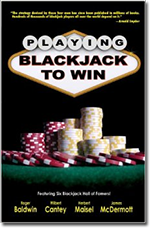
The book that started it all, Playing to Win by the Four Horsemen, was originally printed only 5,000 times. This makes the original edition a highly prized collectible for blackjack aficionados due to its extreme rarity.
The blackjack style played during Baldwin and his team’s era involved a single deck (SD), with the dealer forced to stand on soft 17s (S17), but in today’s casino environment, this version is essentially extinct.
This fact makes “Playing Blackjack to Win” more of a reference point than an actual primer for the modern game, providing players with a glimpse into the analysis.
Baldwin, Cantey, Maisel, and McDermott (1957)
During a dealer’s choice game that included blackjack, a discussion emerged regarding which dealer rules to employ. This led Roger Baldwin, a young private with a Master’s in mathematics, to contemplate the probabilities behind each potential action in a blackjack hand.
Baldwin sought permission to use adding machines and enlisted the help of Sergeant Wilbert Cantey, another card game enthusiast with a knack for math. They were joined by Herbert Maisel, who later became a professor, and James McDermott, both holding Master’s degrees.
Over nearly two years, the four scholars meticulously analyzed data and devised a groundbreaking basic strategy for blackjack. This strategy offered mathematically optimal plays for every player total and dealer up card combination. In 1956, their findings were published in a paper titled “The Optimum Strategy in Blackjack” in the Journal of the American Statistical Association.
Only a year later, the team collaborated on a comprehensive 92-page book, “Playing Blackjack to Win: A New Strategy for the Game of 21,” solidifying their pioneering contribution to the field.
Winning Without Counting
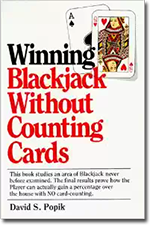
One of Wong’s lesser-known works, Winning Without Counting, was written for players who are unable to perform rapid-fire mental calculations or prefer to avoid any chance of a brush with casino security.
As the title implies, “Winning Without Counting” involves a combination of non-counting based strategies designed to help players improve their overall odds. Of course, much of the advice centers around nothing more than basic strategy, but Wong also includes several supplements meant to replace traditional card counting.
Wong suggests that many dealers bend (or warp) the corners of their aces and ten-value cards while squeezing them to check for blackjack. He advises carefully watching the dealer’s cards while scanning for warps and surrendering accordingly.
Other alternative strategies include kinetics, or the study of body language, shooting for six-card charlies, or drawing six cards without busting, which wins even when the dealer makes a 21 total in some games.
Stanford Wong (1980)
Stanford Wong, born John Ferguson in 1943, is a renowned gambling author celebrated for his book “Professional Blackjack,” initially published in 1975. Under his pen name, Wong has gained widespread recognition for his contributions to the field of gambling literature.
While balancing his academic commitments, Ferguson indulged in blackjack, making regular trips to Renoe and Lake Tahoe. Following his demobilization, he persisted in his blackjack pursuits alongside his Ph.D. studies in Finance at Stanford University.
Basic Blackjack

Supremely deserving of its title, Basic Blackjack by Wong is simply a refresher course on a basic strategy offered by one of the game’s true forerunners.
Published 17 years after his groundbreaking Professional Blackjack introduced players to advanced concepts like “Wonging,” Wong keeps things quite basic with this entry. Of the book’s 18 chapters, 2 through 15 cover basic strategy charts applicable to several common rule setups and regional variations.
Wong touches on his concept of warps, but overall the book is dedicated to nothing more than the humble task of teaching readers the ins and outs of basic strategy.
Stanford Wong (1992)
Stanford Wong, a prominent figure in the blackjack world, earned his place among the esteemed inaugural inductees of the Blackjack Hall of Fame. His journey began when he discovered Edward Thorp’s book, “Beat The Dealer,” which introduced him to the ’10 Count’ card counting method.
In addition to his acclaimed book “Professional Blackjack,” Wong has authored several other notable titles within this realm. These include “Tournament Blackjack” in 1987, “Basic Blackjack” in 1992, and “Blackjack Secrets.”
Blackjack Bluebook II
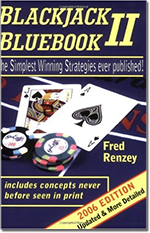
Fred Renzey, a freelance casino gaming writer, made a significant impact with the publication of the original Blackjack Bluebook in 1997, followed by the direct sequel, Blackjack Bluebook II. The focus of these books is to provide an introduction to the finer aspects of the game, particularly targeting novice players.
In this book, Renzey presents his analysis casually and easily understandable, dividing the book into four sections: “Unique Nature of Blackjack,” “What Makes Blackjack Tick?” “Proper Blackjack Strategy,” and “Gaining the Edge.“
Renzey introduces practical concepts such as the “Rule of 9,” which guides players on how to evaluate soft hand situations by considering the dealer’s up card.
According to this rule, players with an ace-2 through ace-7 soft hand should add the dealer’s up card to their non-ace card. If the total is 9 or higher, doubling down is recommended, while totals below 9 should prompt the player to hit.
Throughout the book, Renzey presents clever rules and maxims that simplify complex theoretical concepts into manageable formulas suitable for casual players. By conveying advanced blackjack theory in plain language, Renzey creates an entry point for inexperienced players while also providing valuable insights for experienced players to enhance their strategies.
Fred Renzey (2003)
Fred Renzey, a renowned freelance casino gaming writer, made a significant impact with his publication of the original Blackjack Bluebook in 1997, followed by the direct sequel, Blackjack Bluebook II.
Renzey’s ability to simplify complex blackjack strategies into easily digestible rules and maxims is a testament to his skill in making advanced concepts accessible to both casual players and seasoned experts, enhancing their gameplay with newfound efficiency and effectiveness.
Play Blackjack Like the Pros
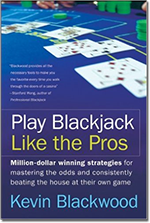
Kevin Blackwood’s book, Play Blackjack Like the Pros, draws inspiration from Phil Hellmuth’s Play Poker Like the Pros in terms of cover design, structure, and writing style.
Blackwood, a professional gambler and blackjack specialist, delves into the world of blackjack and poker as an aspiring author.
His first published book was 2002’s The Counter, a work of fiction centered on the adventures of an advantage player attempting to win $1 million.
In Play Blackjack Like the Pros, Blackwood offers strategic tutorials covering basic rules, debunking myths, and introducing skills for intermediate, advanced, and professional players.
The book is clearly intended for the uninitiated, composed of an introduction, 18 chapters, three appendices, and a glossary. Blackwood covers the rules of the game, the essentials of basic strategy, and common blackjack myths before moving on to skills employed by intermediate, advanced, and professional players.
Kevin Blackwood (2005)
Kevin Blackwood, a professional blackjack player for over 20 years, is the author of The Counter, a novel based on his high-stakes experiences. He has contributed to numerous games, magazines, and online sites.
Blackwood’s book, Play Blackjack Like the Pros, provides practical strategies and pays tribute to a renowned poker author’s style. As a table game specialist, Blackwood offers readers a valuable guide in his pursuit of sharing expert knowledge.
The Big Book of Blackjack
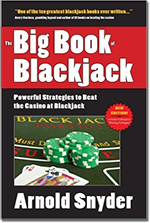
Arnold Snyder’s Big Book of Blackjack is a comprehensive encyclopedia that delves into the rich knowledge of the game.
As a legendary strategist, Snyder presents this book as a convincing testament to its significance. He takes readers on a captivating journey through the game’s history, intertwining facts and legends to glimpse the past.
Profiles of influential figures in blackjack lore add a special touch, given Snyder’s personal exchanges with these experts.
Snyder offers a refresher on his renowned Red 7 counting system and provides strategy charts for the latest game variations, such as BJ Switch, Double Exposure, Super Fun, and Spanish 21.
In-depth exploration of optional side bets like Royal Match, Lucky Ladies, and Over/Under further enhances the reader’s understanding.
For blackjack enthusiasts who admire the game’s allure and beatable nature, The Big Book of Blackjack stands as a timeless monument, capturing twenty-one’s enduring appeal.
Arnold Snyder (2006)
Arnold Snyder‘s Big Book of Blackjack is a comprehensive encyclopedia of knowledge about the game. Delving into its intriguing history and paying tribute to influential figures. Snyder offers a refresher on his Red 7 counting system, strategy charts for different variations, and explores optional side bets.
Blackjack Hall Of Fame Books
Explore thrilling narratives, captivating stories, and intriguing characters whose lives revolve around the allure of blackjack.
Beat the Dealer
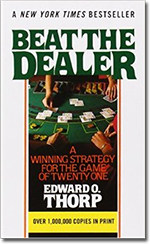
Edward O. Thorp, a math professor, sought to go beyond the concept of optimal strategy invented by the Four Horsemen in blackjack. His goal was to completely reverse the house edge completely, eliminating any casino advantage.
While at MIT and New Mexico State University, Thorp utilized an IBM 704 computer to explore the impact of card counting and tracking exposed cards. He also incorporated the Kelly Criterion, a theory on optimal betting patterns, into his research.
Thorp’s extensive analysis led to the creation of the legendary “ten-count system.” This system relied on a “Thorp Ratio” derived from the number of non-ten value cards divided by the number of ten-value cards in a shuffled deck. Players would keep track of the exposed cards while starting with the numbers 36 and 16 in their heads.
Thorp’s book, “Beat the Dealer,” tapped into the growing interest in casino gambling and became a phenomenal success, selling over 700,000 copies and earning a spot on the New York Times Bestseller List.
As a result of Thorp’s groundbreaking work, casinos swiftly implemented countermeasures, transitioning from single-deck games to two- and four-deck shoes.
In recognition of his achievements, Thorp was among the inaugural members inducted into the Blackjack Hall of Fame in 2002.
Edward O. Thorp (1962)
Edward O. Thorp, a math professor, went beyond the concept of the optimal strategy, aiming to reverse the house edge completely. During his tenure at MIT and New Mexico State University, Thorp used computer analysis to explore the impact of card counting and incorporated the Kelly Criterion into his research on optimal betting patterns.
He developed the renowned “ten-count system” that involved tracking exposed cards and using a “Thorp Ratio” to calculate the advantage. Thorp’s groundbreaking work revolutionized blackjack strategies and earned him a place in the Blackjack Hall of Fame. Nowadays, Thorp is considered one of the best gamblers of all time for his experience and achievements in gambling.
Professional Blackjack
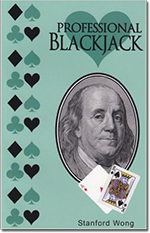
Every serious blackjack player knows the name Stanford Wong, but one of the most prolific gambling authors of all time is actually a pseudonym used by finance professor John Ferguson.
Intent on pursuing gambling as a profession, Wong accepted a $1 salary as a university professor in exchange for permission to skip faculty meetings.
Eventually, Wong combined his own mathematically derived charts and tables with a general primer on blackjack rules, advanced concepts, and card-counting strategies to form Professional Blackjack.
Among the innovations introduced by Wong was back-counting, which later became known simply as Wonging.
According to Wong’s approach, players simply stood back and watched a table while running through their count. Only when the count became favorable to the player would they jump into the game and bet in large increments. Because of the success enjoyed by Wonging players, casinos instituted a rule barring players from joining the table mid-shoe.
Stanford Wong (1975)
Wong’s contributions to blackjack go beyond his writing prowess. He is an active player with various distinctive card-counting strategies, leading to substantial winnings throughout his career. His innovative approaches have allowed him to amass thousands of dollars from multiple casinos.
Throughout this period, he occasionally played blackjack and dedicated his efforts to crafting the content that would ultimately shape his debut book.
While “Professional Blackjack” stands out as his most widely sold book to date, Wong has penned several other popular works within the genre. Wong was also one of the seven original members inducted into the Blackjack Hall of Fame in 2002.
The Theory of Blackjack: The Compleat Card Counter’s Guide to the Casino Game of 21
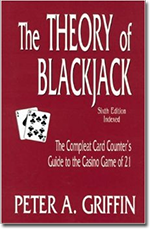
Working as a statistics, calculus, and differential equations professor at Sacramento State, Peter Griffin proposed adding a course on the mathematics of gambling to the school’s curriculum.
After a research trip to Las Vegas to study the game, Griffin “got his clocked clean,” as he later reported in a New York Times profile. The humbling experience prompted Griffin to compile a wealth of statistical evidence on the subject of blackjack as he attempted to further the general understanding of the game’s intricacies.
Griffin published The Theory of Blackjack: The Compleat Card Counter’s Guide to the Casino Game of 21 in 1979. The book included the first calculations of the house edge encountered by “average” players, which Griffin pegged at roughly 2 percent.
Among Griffin’s other theories were methods used to assess the accuracy of a card counting system and formulations of basic strategies based on the most current rule setups and shoe sizes.
Peter Griffin (1979)
Through his mathematical expertise, Peter Griffin, a statistics, calculus, and differential equations professor, revolutionized the understanding of this famour table game. His book, “The Theory of Blackjack,” published in 1979, introduced calculations of the house edge and strategies based on rule variations. Griffin’s contributions earned him a place in the Blackjack Hall of Fame in 2002.
Blackbelt in Blackjack
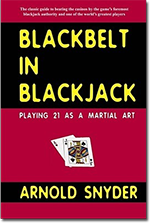
In his groundbreaking 1980 book, “The Blackjack Formula,” Arnold Snyder introduced the concept of deck penetration—the percentage of the deck played and exposed. He emphasized that skilled counters should capitalize on higher deck penetration to maximize their advantage.
In 1983, Snyder published “Blackbelt in Blackjack,” an extensive guide for this game enthusiasts. It featured comprehensive tutorials on basic strategy, intermediate to advanced counting systems, and techniques to evade detection, such as shuffle tracking and deck camouflage. The book introduced various counting systems, including the Red 7, Hi-Lo, Zen, and True count.
Snyder’s contributions extended beyond writing. He has served as the editor of Blackjack Forum since 1981, a vital platform for professional players and game theorists to exchange ideas and conduct research.
In recognition of his expertise, Arnold Snyder was inducted into the esteemed Blackjack Hall of Fame in 2002. His book, “Blackbelt in Blackjack,” remains a valuable resource for enthusiasts and professionals seeking to enhance their skills.
Arnold Snyder (1983)
Arnold Snyder is a prominent figure in the gambling world. As a professional gambler, author, and theorist, his expertise has impacted the game. Snyder’s notable contributions include his groundbreaking book “The Blackjack Formula” in 1980 and his well-known work “Blackbelt in Blackjack” (1983).
He provided advanced strategies, counting systems, and techniques for players aiming to avoid detection. His knowledge and dedication have solidified his reputation as a respected authority in the field of advantage play.
Playing Blackjack as a Business
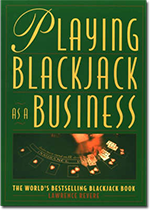
After more than two decades of honing his craft in casinos around the American West, Revere sought to improve upon Thorp’s card counting system. He collaborated with IBM computer scientist Julian Braun to update Thorp’s ten-count system.
The results of their work were published in “Playing Blackjack as a Business,” which advocated the Point Count, the Five Count Strategy, the Reverse Plus-Minus Strategy, and the Ten Count Strategy.
As opposed to Thorp’s academic language, Revere wrote like an everyman. His experience as both a casino employee and a professional gambler allowed him to teach how to avoid detection while counting.
Ever the hustler, Revere only offered the single-deck version of his strategies in the book. He charged extra for access to his “advanced point count” systems.
Lawrence Revere (1969)
Originally born Griffith K. Owens, the man who would eventually take the name Lawrence Revere began dealing with Blackjack in barber shop games as a 13-year-old boy in Iowa. He went on to earn a degree in mathematics from the University of Nebraska.
Revere relocated to Nevada during the 1940s, where he worked as a casino pit boss while moonlighting as a professional player.
Revere was inducted into the Blackjack Hall of Fame in 2005.
Blackjack Attack: Playing the Pro’s Way
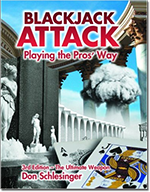
Born in 1946, Don Schlesinger pursued his passion for blackjack theory after graduating with a mathematics degree from the City College of New York (CCNY) and earning advanced degrees in French. In 1997, he channeled his expertise and years of interest into the publication of “Blackjack Attack: Playing the Pro’s Way.”
Now in its third edition, “Blackjack Attack” has become a revered and indispensable work in the realm of this table game literature. The book includes a condensed compilation of the most effective card counting indices ever devised, famously known as the “Illustrious 18.”
Additionally, it introduces concepts like the Creating DI (Desirability Index) and SCORE (Standard Comparison of Risk and Expectation) to optimize game selection based on various rule setups and scenarios.
Recognizing his exceptional contributions, Schlesinger was rightfully inducted into the prestigious Blackjack Hall of Fame in 2014.
Don Schlesinger (1997)
Don Schlesinger, born in 1946, is a respected figure in the world of blackjack.
He obtained a B.S. degree in mathematics from the City College of New York (CCNY) and further pursued his education with M.A. and M.Phil. degrees in French from the City University of New York. Schlesinger’s diverse academic background laid the foundation for his profound contributions.
In 1997, Schlesinger translated his knowledge and deep interest into creating “Blackjack Attack: Playing the Pro’s Way.” This seminal work showcased his expertise and established him as a prominent authority in the realm of professional blackjack.
Burning the Tables in Las Vegas: Keys to Success in Blackjack and in Life
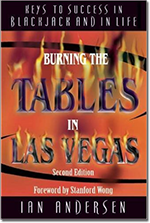
Ian Andersen, made a significant impact on the world of blackjack with his books on casino comportment and advantage play. His first book, “Turning the Tables on Las Vegas,” delved into casino game theory and taught card counters how to avoid detection while exploiting their edge. However, his later work, “Burning the Tables in Las Vegas: Keys to Success in Blackjack and in Life,” garnered attention.
After leaving a corporate management career, he became a successful professional player, traveling across the country while counting cards. “Burning the Tables in Las Vegas” aimed to address the increasing bans on advantage players by offering updated strategies for experienced counters.
One notable aspect of the book is the introduction of the “Ultimate Gambit” strategy in the fourth chapter. Andersen proposed deliberate deviations from basic strategy to camouflage advantage play, such as doubling down with a 10 against a dealer’s 10. By incorporating these calculated deviations while maintaining an accurate count, Andersen believed players could disguise their advantage without sacrificing their edge.
Ian Andersen was inducted into the Blackjack Hall of Fame in 2012. His books continue to be valued resources for players seeking to navigate the complexities of the game and maximize their chances of success.
Ian Andersen (1999)
Ian Andersen is a mysterious figure in the world of blackjack. Operating under a pseudonym, he made significant contributions through his insightful writings on casino comportment and advantage play.
Andersen’s notable books include “Turning the Tables on Las Vegas” and “Burning the Tables in Las Vegas: Keys to Success in Blackjack and in Life,” which provide invaluable strategies for card counters and advantage players.
Best Blackjack Card Counting Books
Master the powerful card counting technique with our blackjack card counting book selection. Unveiling the coveted art of card counting, these books are essential for both novices and experienced counters alike.
The World’s Greatest Blackjack Book
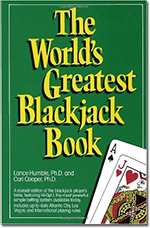
Authored by a pair of Ph.Ds, The World’s Greatest Blackjack Book may not live up to its ambitious title. Still, Lance Humble and Carl Cooper succeeded in crafting a high-quality manual to improve the game for beginners and intermediate players.
Section 6 of the book is essentially a basic strategy tutorial, dividing the entirety of Blackjack’s optimal play chart into several smaller charts. Section 7 introduces the Hi-Opt I card counting system, which expands on a theory pioneered by Charles Einstein in the 1960s.
When using the Hi-Opt I system, players begin a new deck or shoe with a base count of 0 before adding or subtracting for each exposed card. Under the Hi-Opt 1 system:
Players are instructed to increase their bets on high counts while lowering their bets when the count drops into negative numbers.
Lance Humble & Carl Cooper (1980)
Lance Humble is a professional blackjack player and is a renowned figure in the gambling world. Beginning his career as a teacher, he shared his expertise through various courses and classes.
Alongside his coauthor, Carl Cooper, he penned the highly acclaimed book, “The World’s Greatest Blackjack Book.” This seminal work quickly gained recognition as an essential guide for both novice players seeking to understand the fundamentals of the game and experienced gamblers looking to refine their strategies. With its comprehensive insights and practical tips, the book became a go-to resource for anyone aspiring to master the art of blackjack.
Million Dollar Blackjack
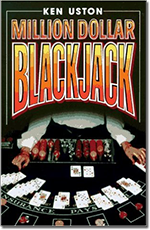
One book stands out this ins type of literature as a definitive guide to success on the felt—Ken Uston’s “Million Dollar Blackjack.” Published in 1982, this groundbreaking work has earned its place as a treasured resource for gamblers seeking to enhance their skills and understanding of the game.
Within the pages of “Million Dollar Blackjack,” Uston presents a comprehensive primer on all aspects of blackjack, from mastering basic strategies to diving into the intricacies of card counting.
What sets this book apart is Uston’s incorporation of his Advanced Point Count system. This innovative approach utilizes seven indices to assign card values, providing professional players with a more precise and effective tool for card counting.
By implementing this system, players gain a strategic advantage, enabling them to make informed decisions based on a deeper understanding of the cards in play.
Uston’s expertise and experience as a successful player shines through his meticulous guidance and insights in “Million Dollar Blackjack.” This seminal work has empowered countless players to take their game to new heights, unlocking the potential for substantial profits at the blackjack tables.
Ken Uston (1982)
Ken Uston, born Kenneth Senzo Usui and adopting the Americanized name, embarked on a remarkable journey that led him to become a prominent figure in the blackjack world. Accepted into Yale University at the age of 16, Uston went on to earn his MBA from Harvard and enjoyed a successful career as a corporate management consultant.
During his time in San Francisco, he encountered Edward Thorp’s “Beat the Dealer,” sparking his interest in blackjack. This newfound passion for the game led Uston to delve into the world of professional card counting.
Blackjack Essays
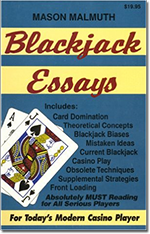
Mason Malmuth, a professional poker player and the owner of Two Plus Two Publishing, brings his expertise with his book “Blackjack Essays.”
With a background in mathematics and a passion for analyzing gambling games, Malmuth’s journey into the blackjack world began in the early 1980s. His concept of card domination, also known as shuffle tracking, is a key focus in the book.
Malmuth’s technique involves keeping the count active after a shoe ends and using the inverted count to estimate the value of the remaining unseen cards.
“Blackjack Essays” caters to experienced card counters, delving into theoretical concepts, biases, and outdated techniques. Malmuth’s expertise and analytical approach make this book a valuable addition to this table game literature.
Mason Malmuth (1987)
Mason Malmuth is a respected author and expert in the field of gambling literature. He owns Two Plus Two Publishing and has a strong background in mathematics, having earned a Bachelor’s degree from Virginia Tech.
Malmuth’s passion for analyzing gambling games led him to publish the influential paper “Card Domination: The Ultimate Blackjack Weapon” in 1983, introducing the shuffle tracking concept.
His book “Blackjack Essays” showcases his deep knowledge of theory, biases, and advanced techniques. Malmuth’s expertise has made him a trusted figure in the gambling community, offering valuable insights for players looking to improve their skills in our casino’s most popular table games.
Knock-Out Blackjack: The Easiest Card-Counting System Ever Devised
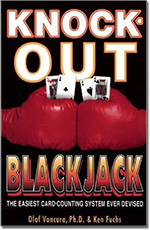
“Knock-Out Blackjack: The Easiest Card-Counting System Ever Devised” introduces the KO counting system, an unbalanced counting method that offers a simplified approach to card counting. Based on the All Sevens system found in “The Book of British Blackjack,” the KO system provides players with a straightforward and effective way to gain an edge at the table.
Vancura and Fuchs’ collaboration resulted in a concise volume that presents the principles and techniques of the KO system, making it accessible to both beginners and experienced players.
“Knock-Out Blackjack” has become a valuable resource for gamblers seeking to enhance their skills and improve their chances of winning. With their expertise and innovative approach, Vancura and Fuchs have significantly contributed to the world of card counting.
Olaf Vancura and Ken Fuchs (1998)
Olaf Vancura, a Ph.D. graduate in physics from Johns Hopkins University and the Chief Creative Officer of Progressive Gaming International Corp, teamed up with Ken Fuchs, a senior electrical engineer specializing in coding services and mathematical research, to publish “Knock-Out Blackjack: The Easiest Card-Counting System Ever Devised” in 1998.
Blackjack for Blood: The Card-Counters’ Bible, and Complete Winning Guide
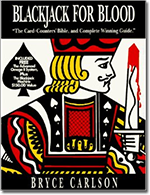
In Blackjack for Blood: The Card-Counters’ Bible, and Complete Winning Guide, Carlson provides a comprehensive introduction to the game, one suitable for true beginners, before delving into the depths of advanced counting strategy and camouflage.
Carlson explains his personal counting technique, the Advanced Omega II System, in great detail, laying the secrets to more than 40 years of profitable big bet blackjack. Even as a balanced count, the Advanced Omega II System is known as one of the more difficult indexes to memorize and apply.
In a rare interview granted to the Swedish gaming website, Kasinocentralen, Carlson expressed satisfaction with his book’s legacy, revealing:
“When I wrote Blackjack For Blood, I wanted to create a comprehensive guide that would assume the reader knew nothing about Blackjack and would lead him step by step from rank beginner to as far as he wanted to go, including all the way to world-class pro. Based on its continued success, and the feedback I get from readers, I think BJFB has fulfilled this goal even beyond what I hoped for.”
Bryce Carlson (2001)
Bryce Carlson, a professional blackjack player, became acquainted with the game after reading Edward Thorp’s Beat the Dealer in the 1970s. With over 40 years of experience, Carlson has honed his skills in various card rooms and casinos across America.
Throughout his journey, he formed close relationships with renowned casino authors. Although his own identity has remained undisclosed, Carlson actively engaged in online blackjack forums during the 1990s, sharing insights and exchanging ideas with some of the most respected figures in the game.
Bringing Down the House: The Inside Story of Six MIT Students Who Took Vegas for Millions
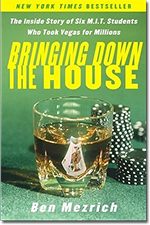
Bringing Down the House: The Inside Story of Six MIT Students Who Took Vegas for Millions is an enthralling book that delves into the captivating journey of the Massachusetts Institute of Technology (MIT) blackjack team.
Founded by J.P. Massar and his partner Bill Kaplan, the team merged the worlds of card counting and investment banking. With a bankroll of $89,000, they recruited talented math prodigies, creating a revolving cast of MIT blackjack teams that operated worldwide. Their remarkable fusion of skills resulted in the team earning millions of dollars.
Written by Ben Mezrich, the book became a New York Times Best Seller, shedding light on the experiences of team member Jeff Ma. While classified as nonfiction, the book faced scrutiny for alleged creative liberties. In 2008, “Bringing Down the House” was adapted into the successful film “21.”
Ben Mezrich (2003)
Ben Mezrich is a renowned author known for his addictive nonfiction narratives. With his book Bringing Down the House, he achieved immense success, chronicling the captivating story of six MIT students who made millions in Vegas.
Mezrich’s sixteen books have sold over four million copies, captivating readers globally. His works, including The Accidental Billionaires, which inspired the film The Social Network, have garnered critical acclaim and prestigious awards. Mezrich’s storytelling prowess and ability to capture extraordinary tales of wealth, intrigue, and betrayal have solidified his status as a master of nonfiction storytelling.
Modern Blackjack Second Edition
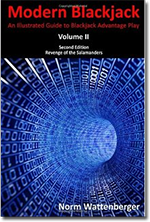
Modern Blackjack Second Edition, a comprehensive manual by Norm Wattenberger, is a vast resource consisting of two volumes spanning 540 pages. It can be accessed for free through Wattenberger’s website, while paperback versions are also available.
With his extensive experience as a card counter spanning over 30 years, Wattenberger is a trusted authority in the field.
The e-book version of Modern Blackjack Second Edition offers continuous updates and is a valuable source for in-depth analysis of blackjack strategy.
Wattenberger covers essential topics such as basic strategy and the REKO and FELT card counting systems, providing comparative analysis.
The book also delves into various casino conditions, exposes scams and myths, and presents methods for applying Wattenberger’s conclusions in real casino settings. It is a valuable resource for gamblers seeking to enhance their skills and understanding of the game.
Norm Wattenberger (2010)
Norm Wattenberger is a highly acclaimed author and renowned figure in the world of blackjack software development. Norm has established himself as a prominent card counter and strategist with several decades of career.
Norm’s expertise in the field has earned him a nomination for the prestigious Blackjack Hall of Fame. Alongside his software contributions, he is the author of the popular book “Modern Blackjack.” Prior to his involvement in the industry, Norm held a notable position as a Vice President of Strategy and Architecture at Citibank.
Advanced Advantage Play

Advanced Advantage Play is a complete book that stands as the ultimate resource for gaining an edge against casino table games. This book provides invaluable insights into beating and safeguarding a variety of table games and side bets found in casinos worldwide, including blackjack, baccarat, and pai gow poker.
Drawing from the esteemed blog APHeat.net by Dr. Eliot Jacobson, Advanced Advantage Play goes beyond traditional gameplay to explore advantage play strategies against marketing and promotions. Supported by computer analysis and statistical data, this book presents information in an accessible manner, making it essential for anyone seeking to outsmart or protect themselves against casino table games.
Although the book covers a wide range of table games beyond blackjack, it also delves into the numerous side bets available in casinos. This book is worth reading, even if you’re not an advantage player.
While it may be one of the more expensive blackjack books available, its insights are invaluable. Mastering just one advantage play technique will quickly offset the cost of the book, making it a worthy investment.
Eliot Jacobson (2015)
Dr. Eliot Jacobson, a distinguished Ph.D. in mathematics and computer science, has made significant contributions to academia for over 25 years. In 2005, he embarked on a new journey as an independent consultant for the casino industry. Having authored two books, The Blackjack Zone (2005) and Contemporary Casino Table Game Design (2010), Dr. Jacobson decided to transform his renowned blog, APHeat.net, into a remarkable book.
Dr. Jacobson has established himself as a leading authority in the field through numerous publications and media appearances. His expertise spans across casino table games, casino mathematics, and advantage play, garnering him global recognition.
History of Blackjack in Books

The classic card game known as blackjack first appeared in popular literature in 1613, when Spanish author Miguel de Cervantes published a story collection entitled Novelas Ejemplares.
One of the 12 short stories included in Cervantes’ collection was Rinconete y Cortadillo, a tale of two card cheats operating out of the Spanish city of Seville.
Throughout the story, Cervantes’ cheats specialize in a card game called ventiuna, the Spanish word for twenty-one. As the name implies, the object of ventiuna was to reach a total closest to 21 without going over. Plus, in Cervantes’ story, aces are valued at either 1 or 11.
The fact that Rinconete y Cortadillo was set in 1569 suggests that ventiuna, the precursor to modern-day real money blackjack, was played throughout the 16th century and perhaps even earlier. Indeed, historians have identified several regional variations from around the same time as Cervantes’ story was written. These include vingt-et-un (French for “twenty-one”), quinze (French for “fifteen”), and sette e mezzo (Italian for “seven and a half”).
The First Written Analysis of Blackjack

In 1953, during a card game at the US Army Barracks, Roger Baldwin’s curiosity sparked the first analytical writings on blackjack. With the help of mathematicians Cantey, Maisel, and McDermott, they developed a basic strategy.
Their groundbreaking research was published in a paper titled “The Optimum Strategy in Blackjack” in 1956. They then wrote the book “Playing Blackjack to Win: A New Strategy for the Game of 21” in 1957.
Although they never put their strategy into practice, Baldwin, Cantey, Maisel, and McDermott, known as the “Four Horsemen of Aberdeen,” were honored with induction into the Blackjack Hall of Fame in 2008.
Boost your Skills With These Books on Blackjack
When it comes to the best blackjack books, there is a treasure trove of invaluable resources for players at every level. From classic titles to modern masterpieces, these books cover various aspects of the game, including basic strategy, card counting systems, advanced tactics, and casino conditions.
Whether you’re a novice seeking to sharpen your skills or a seasoned player searching for an edge, the best blackjack books are indispensable companions on your journey.
These books are gateways to a world of strategic thinking, mathematical calculations, and calculated risks. Reading just a few could pave the way for a rewarding and successful experience.
If you like our comprehensive guide on best blackjack books, check our list of books on slots!


